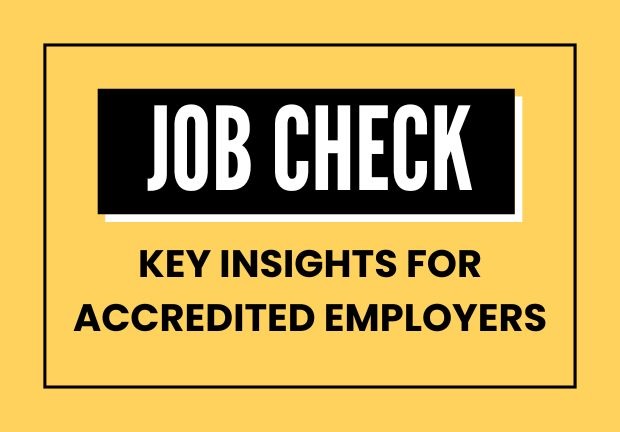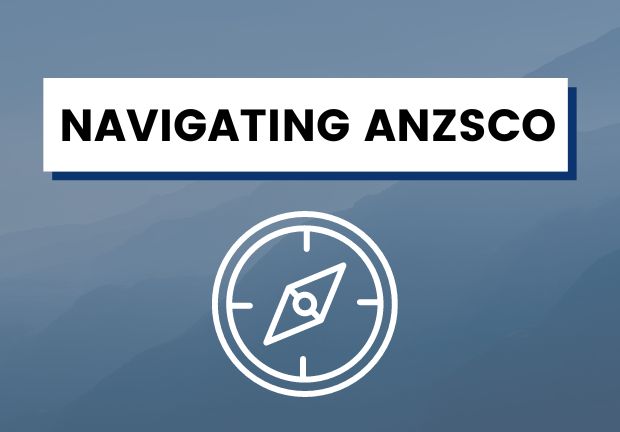Changing Tides in Job Checks
29 April 2025FAQs for Employers as INZ Shifts Gears
Job Checks aren’t new — but how INZ assesses them has changed.
While the Accredited Employer Work Visa (AEWV) framework has been around for a while, recent months have brought a significant shift in the way Immigration New Zealand (INZ) processes Job Checks — particularly in how they assess market rates, interpret ANZSCO codes, and enforce advertising requirements.
These changes are catching many employers off-guard.
What previously passed without issue is now triggering Requests for Information (RFIs), delays, or even outright rejections — not because the job offer isn’t genuine, but because the supporting evidence no longer aligns with INZ’s updated standards. A flawed Job Check can leave your candidate in prolonged limbo if concerns are raised.
It’s more important than ever to approach your Job Check with strategy and precision — especially now that the median wage threshold has been scrapped for AEWV, and ANZSCO has taken centre stage.
Background First: What Is the Job Check?
The Job Check is the second step in the Accreditation process — and arguably one of the trickiest. Things can get complicated quickly, and errors at this stage can lead to unnecessary delays and costs. Only once the Job Check is approved can a migrant be invited to apply for an Accredited Employer Work Visa (AEWV) or a Variation of Conditions (VOC) on an existing AEWV.
Job Check Milestone Update
From 1 January 2025 to 24 February 2025, Immigration New Zealand (INZ) decided over 3,424 Job Check applications, covering more than 7,739 positions under the AEWV scheme. After significant delays, INZ is now prioritizing certain categories of job checks, helping expedite processing.
Frequently Asked Questions
What is the market rate, and how is it different from the median wage?
As of 10 March 2025, INZ made changes to salary thresholds across visa categories. Job Checks no longer require roles to meet the median wage, unless you're applying under the twice-median wage exemption to bypass advertising.
Read this article to understand which rate applies to which situation.
Which roles require WINZ engagement?
Job Checks for ANZSCO skill level 4 and 5 roles require employers to engage with Work and Income (WINZ) before applying, in addition to advertising the role on a national job platform for 21 days.
What changed in the WINZ advertising requirement?
From 10 March 2025, the WINZ engagement requirement became declaration-based, and the 21-day listing was removed. Employers must now declare in good faith that they advertised skill level 4 or 5 roles with WINZ and interviewed any suitable candidates.
If the process is now declaration-based, how will INZ verify the information in Job Checks?
Expect INZ to issue Requests for Information if there are doubts about the credibility of the WINZ engagement. You may be asked to submit supporting documents. Proceed with care and diligence.
Can the advertising period for lower-skilled roles be split?
Yes, advertising at various platforms can be non-consecutive. However, the Job Check must be submitted within 90 days of all advertisement periods, including any WINZ listing, where applicable.
INZ disagrees with our ANZSCO level and says we didn’t engage with WINZ. What can we do?
Sadly, you only have two options:
1. Provide evidence to convince INZ that the role is ANZSCO level 1, 2, or 3, or
2. Accept the decline, as WINZ engagement must be completed before submitting a Job Check — you can’t fix this afterward.
Additionally, your minimum requirements listed in the advert may need to change to reflect the level required by ANZSCO.
This is why a thorough, front-loaded approach is essential.
We got a Job Check approved for a level 2 role with a market rate below the previous median wage. Now our staff member wants a raise to meet the median wage for residence. What are the implications?
While AEWVs no longer require the median wage, residence pathways still do. If the staff member isn’t earning the median wage, their work experience may not count towards residence eligibility.
We applied with 2 years of experience based on INZ’s new rule, but the Job Check was declined. We don’t understand why.
INZ has reduced the minimum AEWV threshold to 2 years' relevant experience (or a Level 4 qualification). However, ANZSCO role requirements may override this.
Example:
- Mechanic (Level 3 ANZSCO) requires 3 years of experience or a Level 4 qualification, and may also require on-the-job training.
- INZ’s 2-year rule applies only if ANZSCO doesn’t require more.
In contrast:
- Kitchenhand (Level 5 ANZSCO) only requires Level 1 qualifications with no compulsory experience. INZ’s 2-year experience minimum applies here.
What happens to Job Checks that overlap with expiring accreditation?
The Job Check remains valid as long as the accreditation is valid. If you’ve applied for a renewal and receive Interim Accreditation, your Job Checks remain active and usable.
Does the ANZSCO code used in the Job Check carry through to residence?
Generally, yes. INZ may reassess it at the residence stage, but if the role hasn’t changed, the ANZSCO code from AEWV often flows through. That’s why it’s critical to choose the right code upfront, aligned with the migrant’s long-term goals.
What are the fees?
- $735 for each Job Check
- $250 for a reconsideration request (if declined)
Why is the correct ANZSCO code so important?
Choosing the wrong ANZSCO code can trigger:
- Delays or rejections
- WINZ requirements you weren’t expecting
- Disruptions to the residence pathway
ANZSCO selection affects everything — from job classification to compliance and visa longevity.
You can also read our previous FAQs on Job Checks here.
As INZ sharpens its approach to Job Checks, employers must do the same. These aren’t just administrative steps — they directly impact your business continuity and your ability to support skilled migrant workers long-term.
At Aims Global, we’ve guided hundreds of businesses through Accreditation, Job Checks, and visa applications — with a sharp eye on every policy shift.
Need clarity or a second opinion before submitting your next Job Check? Get in touch — and let’s make sure your process is compliant, strategic, and future-focused.




.png)